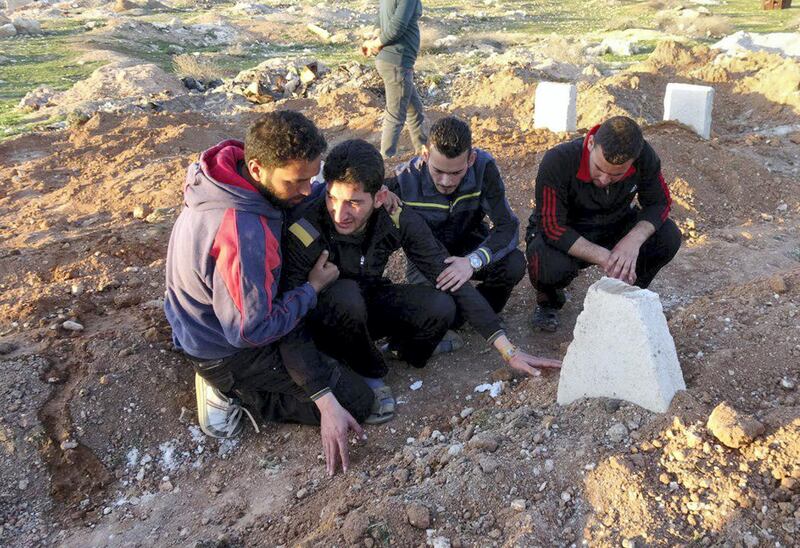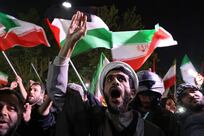The past month in Syria has been dizzying.
There was the abrupt American decision to withdraw from Syria, announced after a phone call between US President Donald Trump and Turkish President Recep Tayyip Erdogan (and later the US administration's decision to keep several hundred troops to guard oil facilities).
Turkey decided to invade north-eastern Syria, in a campaign meant to drive back the Kurdish militias that had been under American protection and that lost thousands of fighters in the battle against the terror group ISIS. The Kurds were forced to realign with the regime of president Bashar Al Assad, giving the Syrian dictator control over huge swathes of the country without a single shot fired.
Then ISIS leader Abu Bakr Al Baghdadi killed himself while being pursued by American special forces in a remote compound near the Turkish border. His deputy was also killed in an airstrike less than a day later. Both were monumental developments that ushered in a new era for the group, heralding its destruction and its potential rebirth amid continuing injustice in the region.
And far from the limelight, a constitutional committee focused on drafting Syria's post-war charter convened for the first time in Geneva.
The geopolitics, trysts of overlapping alliances and the spectacle of ISIS terrorism in Syria have always overshadowed a more fundamental truth and belied the reality of why Syria happened. It happened because ordinary citizens rebelled against an all-consuming tyranny.
A recent report published by the Syrian Network for Human Rights (SNHR), a reliable chronicler of the myriad human rights abuses over the years in Syria, brought this all into sharp focus once again.
The report examined how the Assad regime wreaked brutality on Syrian civilians, including children, through the prism of its infamous prison network, managed by its equally infamous security apparatus. It identified 72 distinct methods of torture employed by interrogators in Mr Al Assad’s dungeons all over the country, including sexual assault. The details of the different methods are too graphic to be recounted here, but the report is publicly available.
There is a word that describes this level of creativity in inflicting suffering: sadism.
This sadistic exuberance in unleashing violence is of course mirrored by the regime’s conduct throughout the war. After all, it devised the notorious barrel bombs, which are barrels filled with shrapnel and explosives dropped from planes on to civilian neighbourhoods. These bombs are so woefully inaccurate and barbaric that using them at all is a war crime. The regime’s pilots usually dropped them far behind enemy lines to avoid accidentally killing its own soldiers.
But beyond the details of its specific torture methods, the scale of the oppression visited upon Syrians through the prison system is shocking. It is a titanic endeavour that is meant to manufacture terror on an industrial scale.
SNHR documented the death under torture at the hands of Syrian regime forces of 14,131 people between March 2011 – when Syrians began marching in the streets to demand the reforming and later the overthrow of the Assad dynasty – and September 2019.
In addition, at least 130,000 people are still detained or forcibly disappeared by Mr Al Assad’s security apparatus, their fates unknown, almost certainly subjected to torture as well. That is 130,000 individuals, whose families still have no idea whether they are alive or dead, some imprisoned now for eight years.
But the truly staggering estimate is the total number of people who have been detained or arrested by the regime since the start of the uprising – a total of 1.2 million people, or 5 per cent of Syria’s pre-war population. That is a systematic regime of fear, meant to cow an entire population into abject submission.
The war in Syria has upended many of our shared beliefs – in the resilience of the liberal international order and the world’s commitment to “never again” allowing the kind of mass slaughter that took place in Rwanda and the former Yugoslavia. It has made us question our basic goodness, our common humanity that saw the flight of millions from certain death but responded by shutting doors and erecting walls.
The war has also realigned the regional order – shifting alliances, America’s retreat from obligations that underpinned Middle Eastern security for decades, Russia’s resurgence as an influential power, Turkey’s eastward lurch towards Moscow and away from its traditional Nato allies, the rise and rise of sectarianism.
But often one basic fact is forgotten in the high-minded policy debates and international hand-wringing. It all started because some courageous human beings contemplated decades of torture, abuse and tyranny by the Assad police state and said: “Enough.”





